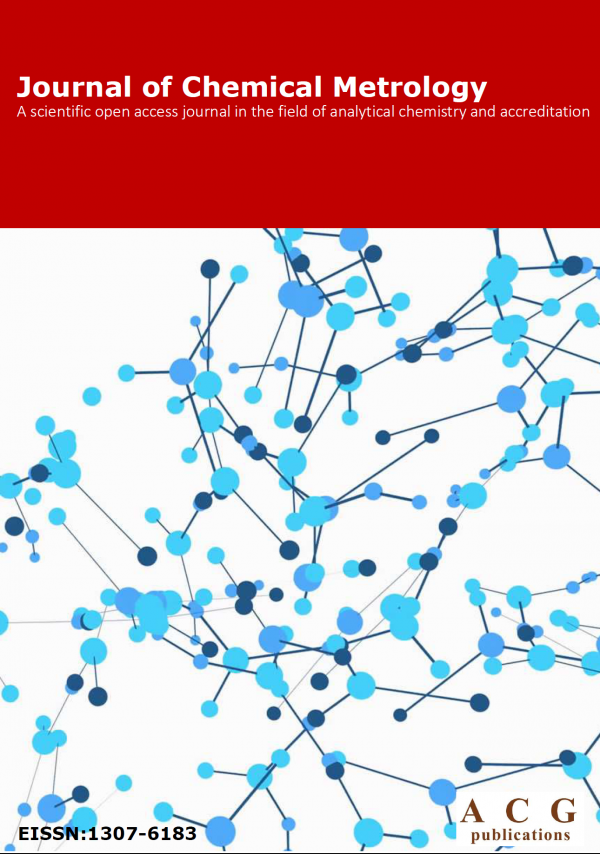Journal of Chemical Metrology
Year: 2016 Volume: 10 Issue:1
1) Comparison of qNMR and HPLC-UV techniques for measurement of Coenzyme Q 10 in dietary supplement capsules
The objective of this work is to apply and compare qNMR and HPLC-UV techniques as useful quality control tools for quantitative measurements of Coenzyme Q 10 in dietary supplement capsules, for which two types of dietary supplement capsules were analysed, containing 100 and 200 mg of Coenzyme Q 10. Both techniques were properly validated in terms of linearity, repeatability, sensitivity (LOD, LOQ ) and , trueness accuracy and precision (repeatability and intermediate precision) precision . The uncertainty of the techniques was evaluated according to per EURACHEM / CITAC Guide CG 4 (3th edition), Quantifying Uncertainty in Analytical Measurement. The HPLC-UV and qNMR methods were linear in the ranges of 10.0 –1000.0 µg mL -1 and 2.2 – 30.3 mg mL -1 for Coenzyme Q10, respectively, and demonstrated very good linearity performance with regression coefficients (R2) above ≥ 0.99. Using qNMR method, LOD and LOQ were found to be 0.48 and 1.47 mg per 0.7 ml, respectively. The LOD and LOQ values of HPLC-UV were found to be 0.025 and 0.083 µg mL -1, respectively. Intra and inter batch accuracies for HPLC-UV, as a deviation between nominal and measured values, ranged from -0.3 to 7.1% and from -0.9 to 6.3%, respectively. The accuracy for qNMR was assessed using one concentration level with 6 different samples. Comparison of the measurements of the capsul samples indicated that the both methods were appropriate for the determination of Coenzyme Q10 in pharmaceutical quality control (QC), although the qNMR as a primary measurement method was found to be more convenient especially in the method development phase. The advantages of qNMR were its environmental friendliness due to the low solvent consumption, selectivity and short sample preparation time. By using the qNMR technique there is no need to concern in terms of carry over problems.
Keywords qNMR liquid chromatography quantitative analysis method development Coenzyme Q 10 dietary supplements DETAILS PDF OF ARTICLE © 2016 ACG Publications. All rights reserved.2) Phenolic acid contents of Salvia poculata Nab by LC-MS/MS
Phenolic acids, biological aromatic secondary plant metabolites, are widely distributed throughout the plant kingdom. Due to the biological importance of phenolic acids as secondary metabolites, development of analytical methods for the determination of phenolic acids crucial. In the present study, a simple, rapid LC-MS/MS method was developed and validated for phenolic acid determination in methanol extract of Salvia poculate Nab from Turkey. The relative standard deviations (RSD) were found to be 3.01, 5.99, 3.21, 2.07 and 5.59 % for phenolic acids caffeic acid, fumaric acid, p-coumaric acid, syringic acid and t-ferulic acid respectively. The correlation coefficient was greater than 0.99 for each analytes in the calibration range. The uncertainty of the measurements for phenolic compounds were 7.31%, 9.27%, 7.34, 6.78% and 9.11% respectively.
Keywords Salvia phenolic acids LC-MS/MS method development and validation uncertainty DETAILS PDF OF ARTICLE © 2016 ACG Publications. All rights reserved.